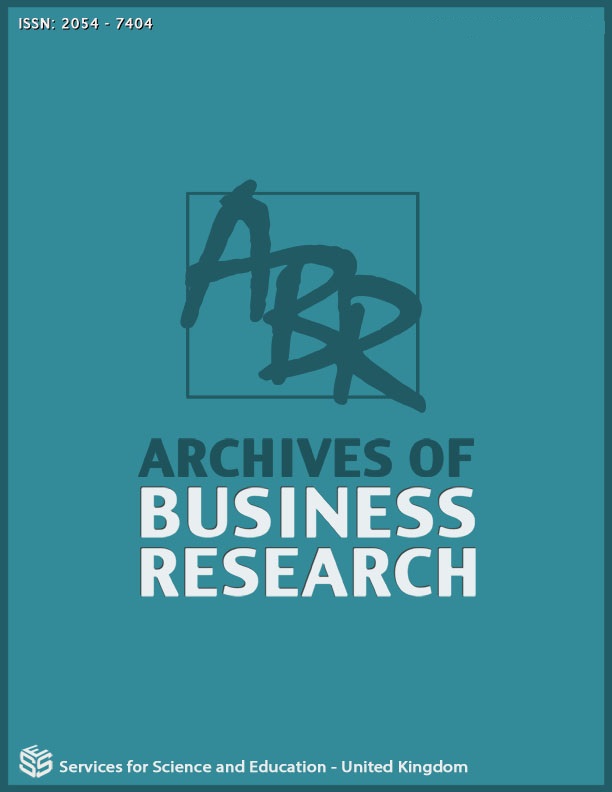Society shapes industrial policy, industrial policy shapes society
DOI:
https://doi.org/10.14738/abr.1003.11682Keywords:
Systemic Industrial Policy, Future of Capitalism, Competition between Superpowers, Lead in Environmental PolicyAbstract
Industrial Policy has been defined and performed in very different ways over time and across countries and continents, along with its aims and scope. Instead of repeating these controversies, the article starts with the emerging consensus that systemic industrial policy should support societal priorities and that instruments should be used which maximize synergies with other policy strands. A future-oriented industrial policy should also no longer maximize national priorities, but goals should at least be shared with neighboring countries. Realistically, we have to acknowledge that it will remain a weapon in the competition between superpowers and those who want to defend or gain this status. Industrial Policy will also be different in emerging countries with low income and education, a high agricultural share, and persistent gender differences, compared to that in highly industrialized countries. Industrial policy leads to and requires structural change, with causality running in both directions. Its shape will influence the "future of capitalism", and the socio-ecological system will define the content of a systemic and integrated industrial policy.
References
Aghion, Ph., Boulanger, J., & Cohen, E. (2014). Rethinking Industrial Policy. Bruegel Policy Brief, 04.
Aiginger, K. (1987). Production and Decision Theory under Uncertainty. Basil Blackwell.
Aiginger, K. (2007). Industrial Policy: A Dying Breed or A Re-emerging Phoenix. Journal of Industry, Competition and Trade, 3(4), 297-323. DOI:10.1007/S10842-007-0025-7
Aiginger, K. (2015). Industrial Policy for a sustainable growth path. In Bailey, D., Cowling, K., & Tomlinson, P. New Perspectives on Industrial Policy. Oxford University Press.
Aiginger, K. (2016). New Dynamics for Europe: Reaping the Benefits of Socio-ecological Transition. Part I: Synthesis, WWWforEurope Synthesis Report, Final Version. Vienna, Brussels.
Aiginger, K., & Colcuc, A .(2021). Climate Policy Goes Mainstream A New Priority Distinct from Laissez-faire, Which Supports Welfare and Equity. Research in Economics and Management, 6(4). https://doi.org/10.22158/rem.v6n4p20
Aiginger, K., & Rodrik, R. (2020). Rebirth of Industrial Policy and an Agenda for the Twenty-First Century. Journal of Industry, Competition and Trade, 2, 189-207. https://doi.org/10.1007/s10842-019-00322-3
Aiginger, K., Bärenthaler-Sieber, S., & Vogel, J. (2013). Competitiveness under New Perspectives. WWWforEurope Working Paper, 44. http://dx.doi.org/10.13140/RG.2.1.1003.1525
Aiginger, K. (2013). The Greening of Industrial Policy, Headwinds and a possible Symbiosis. WIFO Working Papers, 450.
Aiginger, K., & Sieber, S. (2006). The Matrix Approach to Industrial Policy, International Review of Applied Economics, 20(5), 573-603. DOI: 10.1080/02692170601005507
Andreoni, A., & Chang, H.J. (2019). The political economy of Industrial Policy. Structural Change and Economic Dynamics, 48, 136-150. DOI: 10.1016/j.strueco.2018.10.007
Atkinson, R.D. (2021). Why America needs a Competitiveness Council. December 13. https://itif.org/publications/2021/12/13/why-america-needs-national-competitiveness-council
Bock-Schappelwein, J. (2016). Digitalisierung und Arbeit. In Peneder, M. (Koordination), Bock-Schappelwein, J., Firgo, M., Fritz, O., & Streicher, G. Österreich im Wandel der Digitalisierung. Studie des WIFO im Auftrag von A1 Telekom Austria AG.
Curzon Price, V. (1981). Industrial Policies in the European Community. Springer Verlag GmbH.
Colcuc, A. (2021). Reduktion der Armut in Industrieländern: Theorie, Instrumente, Erfolge. Bachelor Thesis, Business University of Vienna.
European Commission. (1990). Industrial policy in an open and competitive environment: Guidelines for a community approach. COM(1990) 556. https://op.europa.eu/s/vkpC
European Commission. (2002). Industrial policy in an enlarged Europe. COM(2002) 714. https://ec.europa.eu/invest-in-research/pdf/download_en/industrial_policy_enlarged_europe.pdf
European Commission. (2004). Fostering structural change: An industrial policy for an enlarged Europe. COM(2004) 274. https://eur-lex.europa.eu/LexUriServ/LexUriServ.do?uri=COM:2004:0274:FIN:en:PDF
European Commission. (2005). Integrated guidelines or growth and jobs. COM(2005) 141 final. https://ec.europa.eu/economy_finance/publications/pages/publication6410_en.pdf
European Commission. (2007). Mid-term review of industrial policy, A contribution to the EU’s Growth and Jobs Strategy. COM(2007) 374 final. https://eur-lex.europa.eu/LexUriServ/LexUriServ.do?uri=COM:2007:0374:FIN:en:PDF
European Commission. (2010). An Integrated Industrial Policy for the Globalisation Era Putting Competitiveness and Sustainability at Centre Stage. COM(2010) 614 final. https://eur-lex.europa.eu/LexUriServ/LexUriServ.do?uri=COM:2010:0614:FIN:EN:PDF
European Commission. (2011). A resource-efficient Europe – Flagship initiative under the Europe 2020 Strategy, Communication from the Commission to the European Parliament, the Council, the European Economic and Social Committee and the Committee of the Regions. COM(2011) 21 final. http://eur-lex.europa.eu/LexUriServ/LexUriServ.do?uri=COM:2011:0021:FIN:EN:PDF
European Commission. (2012). A Stronger European Industry for Growth and Economic Recovery, Industrial Policy Communication Update. COM(2012) 582 final. https://eur-lex.europa.eu/LexUriServ/LexUriServ.do?uri=COM:2012:0582:FIN:EN:PDF
European Commission. (2020). Making Europe´s business future ready. March 10. https://europeansting.com/2020/03/10/making-europes-businesses-future-ready-a-new-industrial-strategy-for-a-globally-competitive-green-and-digital-europe/
Gelb, A., Ramachandran, V., Meyer, C.J., Wadhwa, D., & Navis, K. (2020). Can Sub-Saharan Africa Be a Manufacturing Destination? Journal of Industry, Competition and Trade, 20, 335–357. https://doi.org/10.1007/s10842-019-00331-2
Krugman, P., & Obstfeld, M. (1991). International Economics Theory and Policy. New York, Harper Collins.
Peneder, M. (2017). Competitiveness and Industrial Policy: From Rationalities of Failure Towards the Ability to Evolve. Cambridge Journal of Economics, 41(3), 829–858.
Rodrik, D. (2004). Industrial Policy for the Twenty- First Century. CEPR Discussion Paper, 4767.
Rodrik, D. (2014). Green Industrial Policy. Oxford Review of Economic Policy, (30)3, 469-491. https://doi.org/10.1093/oxrep/gru025
Rodrik, D., & Sabel. C. (2019). Building a Good Jobs Economy. Harvard Kennedy School Faculty Research Working Paper, RWP20-001.
Sachs, J. (2021). America's Struggle at Home. Project Syndicate, December 4. https://www.project-syndicate.org/onpoint/america-struggling-at-home-to-reverse-decades-neglect-by-jeffrey-d-sachs-2021-12?barrier=accesspaylog
Saggi, K., & Pack, H. (2006). Is There a Case for Industrial Policy? A Critical Survey. The World Bank Research Observer, 21(2). https://doi.org/10.1093/wbro/lkl001
Shafik, M. (2021). What we owe each other, A New Social Contract. The Bodley Head, London.
Tagliapietra, S., &Veugelers, R. (2021). Fostering the Industrial Component of the European Green Deal: Key Principles and Policy Options. Intereconomics, (56)6, 305-310.
Wawra, J. (2021). China´s Long Run Objectives, Challenges and Drivers. Master Thesis, Business University of Vienna.
Yildirim Metz, H. (2021). The Inequality Paradox: The ambivalent Role of Gender Inequality in Developing countries. Master Thesis, Business University of Vienna.
Downloads
Published
How to Cite
Issue
Section
License
Copyright (c) 2022 Karl Aiginger

This work is licensed under a Creative Commons Attribution 4.0 International License.






